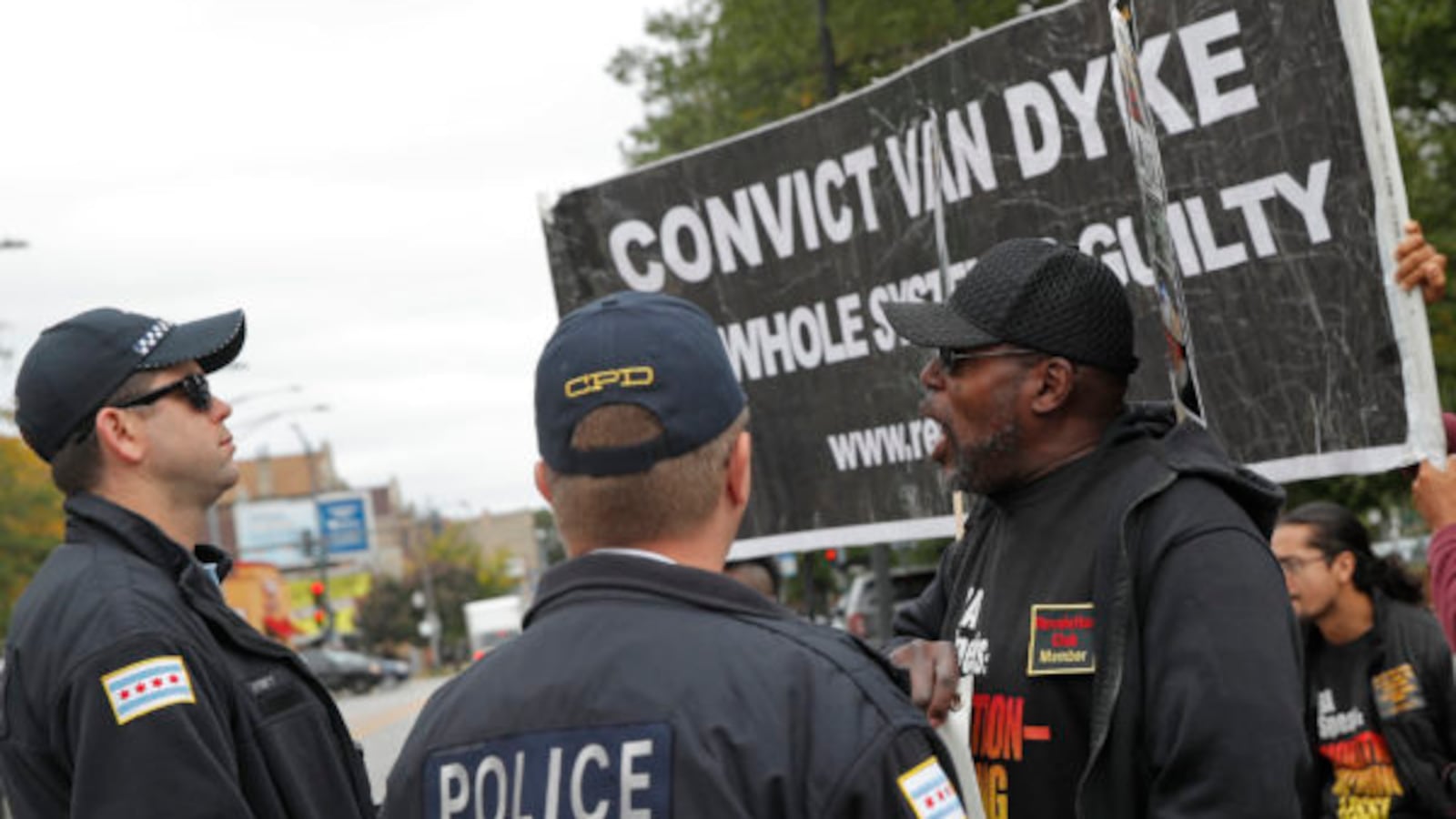The Chicago school district and police department must develop clear guidelines for hiring, overseeing and evaluating school police officers by next school year, according to a one-year plan released this week by independent monitor Maggie Hickey as part of a federal consent decree overseeing the city’s troubled police department.
The series of deadlines for crafting a policy on police in schools lays out a tall order and a relatively fast timeline for sweeping changes. For the first time in more than a decade, the 100-plus officers who patrol Chicago’s schools will have regular training and written guidelines.
New Mayor Lori Lightfoot, who also oversaw police discipline cases as president of the Chicago Police Board, has been critical of the role that police have played in schools but has yet to promise any concrete changes.
Citing an altercation earlier this year at Marshall High School where police were filmed dragging a girl down a flight of stairs and tasing the student, Lightfoot questioned whether police should be “effectively, first responders in our schools.” But she has also said some schools were dangerous and need security presence.
Below are the deadlines that the court monitor ordered the school district and police to meet:
Before next school year: develop criteria to decide which officers serve in schools
By the start of school the police department, which places officers in schools, must develop criteria for screening school officers to ensure they’re qualified and able to work safely and effectively with students, parents and school employees.
To measure effectiveness, the monitor will follow whether officers are judged by the criteria and the extent to which the department engages with community members in placing officers in schools.
Before next school year: clearly define the role of officers within schools
Without a separate unit for officers who serve in schools, or a dedicated school resource officer program, police in schools have few clear guidelines about their role in schools or how they are expected to be involved in discipline with students. That means principals or deans have to develop practices with the officers working in their schools.
And because officers report to their police commanders, there isn’t a clear way for school leadership or teachers to keep officers accountable. “I’ve never had any formal communication from CPS about the role of police officers in schools,” Chad Adams, principal at Sullivan High School in the Rogers Park neighborhood, told the Chicago Reader in 2017.
Before next school year, the monitor said police must “develop a policy that clearly defines the role of officers assigned to work in CPS schools,” including prohibiting officers from administering school discipline and deciding how to use data of police activities in schools.
By the end of this year: create annual training for officers in schools
Improving police training was a recommendation from both the U.S. Department of Justice and a police reform task force Lightfoot served on several years ago.
Currently, officers don’t receive youth-specific training or guidelines. Without them, advocates argue that officers treat students as they might a suspect on the street.
The consent decree suggests that by the end of the year, the district will create training for officers going into schools that will be taken yearly and include teaching about cultural competence, de-escalation techniques and youth development.
Meanwhile, a committee is creating a training for school resource officers that was mandated by a bill drafted by police reform advocates and signed into law by former governor Bruce Rauner last August. The law requires school resource officers in Illinois to take at least 40 hours of training every four years that includes crisis intervention training and trauma-informed care for youth.
Before next school year: sign a memorandum of understanding between the police and Chicago Public Schools
Last fall, Chicago’s inspector general released a report on Chicago’s police in schools and noted “extreme concerns,” and recommended the police department and the school district create a memorandum of understanding about the roles and responsibilities of school-based police.
The monitor instructs both bodies to “undertake best efforts” to enter into an agreement that would clearly lay out procedures for how officers would interact with students on school grounds.
In a statement, the district said they are “fully committed” to partnering with the police department, and that “the MOU process is moving forward.”

